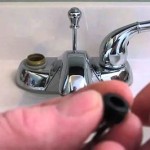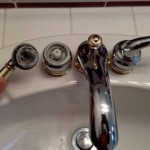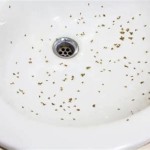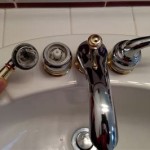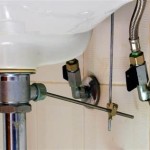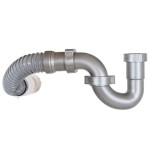Fitting a Bathroom Sink Plug: A Step-by-Step Guide
A bathroom sink plug is an essential component of any bathroom, enabling you to fill the sink with water for tasks like washing your hands, brushing your teeth, or shaving. While sink plugs are generally straightforward to install, there are several different types, each with its own installation process. This article will guide you through the steps of fitting a bathroom sink plug, covering different types and common installation methods.
Types of Bathroom Sink Plugs
Bathroom sink plugs come in various styles and materials, each with its own advantages and disadvantages. Understanding the different types will help you choose the right one for your sink and personal preferences.
Pop-up plugs: These are the most common type, consisting of a lever or button that raises and lowers the plug. They are typically made of brass or plastic and often feature a chain for easy operation. Pop-up plugs are generally easy to install and maintain.
Push-button plugs: Similar to pop-up plugs, push-button plugs are activated by pressing a button. They often come with a built-in overflow mechanism, ensuring water doesn't spill over the sink's edge. These plugs are more modern and sleek in appearance.
Stopper plugs: These plugs are simple and inexpensive, consisting of a rubber or plastic stopper that sits directly in the drain hole. They are easy to use but can sometimes be lost or difficult to retrieve from the drain.
Basket strainers: These plugs feature a mesh basket that catches hair and debris, preventing them from clogging the drain. They are typically made of metal and can be combined with pop-up or push-button mechanisms.
Installing a Pop-up Plug
The following steps outline the process of installing a standard pop-up plug:
- Turn off the water supply: Locate the shut-off valve for your sink and turn it clockwise until it's completely closed. This will prevent water from flowing into the sink during the installation process.
- Remove the old plug: Unscrew the old plug from the drain assembly. If it's stuck, you can use a pair of pliers to gently loosen it.
- Remove the old overflow plate: If your sink has an overflow plate, remove it by unscrewing the screws that hold it in place. You may need to use a screwdriver or a small wrench for this step.
- Inspect the drain assembly: Check the drain assembly for any damage or corrosion. If necessary, replace worn-out parts or clean the assembly with a wire brush.
- Install the new plug: Thread the new pop-up plug onto the drain assembly. You may need to use a wrench or pliers to tighten it securely.
- Install the overflow plate (if applicable): If your sink has an overflow plate, reattach it to the drain assembly using the screws you removed earlier.
- Connect the chain: With the plug attached, connect the chain to the lever or button of the plug. Ensure the chain is long enough to reach the sink basin comfortably.
- Test the plug: Turn on the water supply and test the new plug by opening and closing the lever or button. Make sure the plug operates smoothly and prevents water from draining.
- Clean up: Wipe down the sink and surrounding area to remove any water or debris.
Troubleshooting and Tips
Installing a bathroom sink plug usually involves straightforward steps. However, some issues may arise. Here are some common problems and solutions:
Leaks: If the plug is leaking, check for any loose connections or damaged parts. Tighten any loose connections and replace any damaged parts as needed.
Plug sticking: If the plug is sticking, clean the drain assembly with a wire brush or a drain cleaner. This will remove any debris that might be preventing the plug from moving freely.
Chain too short or too long: Adjust the chain length as needed. You can shorten the chain by cutting it and attaching a new end, or lengthen it by adding a chain extension.
Overflow plate issues: If the overflow plate is leaking or not fitting properly, tighten the screws or replace the plate with a new one. Ensure the overflow plate aligns with the drain assembly to prevent leaks.
When in doubt, consult a professional plumber: If you encounter difficulties or are unsure about any aspect of the installation process, consult a licensed plumber. They can provide expert advice and ensure the job is done safely and correctly.

How To Replace A Sink Stopper Quick And Simple Home Repair
Install A Drain Stopper So The Is Removable

How To Fix A Bathroom Sink Drain Stopper 4 Easy Solutions

Step By Guide On How To Install Sink Pop Up Drain Stopper

Bathroom Sink Popup And Stopper Problems

How To Replace Bathroom Sink Stopper Avg Cost 25 65 1 2hrs

How To Fix A Spring Loaded Pop Up Waste Plug In Hand Basin Or Bath Tub Mayfair Plumbing Adelaide

How To Fit A Bathroom Sink Waste Plug Basin

How To Remove A Bathroom Sink Stopper Take Out Pop Up Drain From

Fixing Tricky Pop Up Drain Sink Stopper Mechanisms Efficient Plumber
Related Posts

